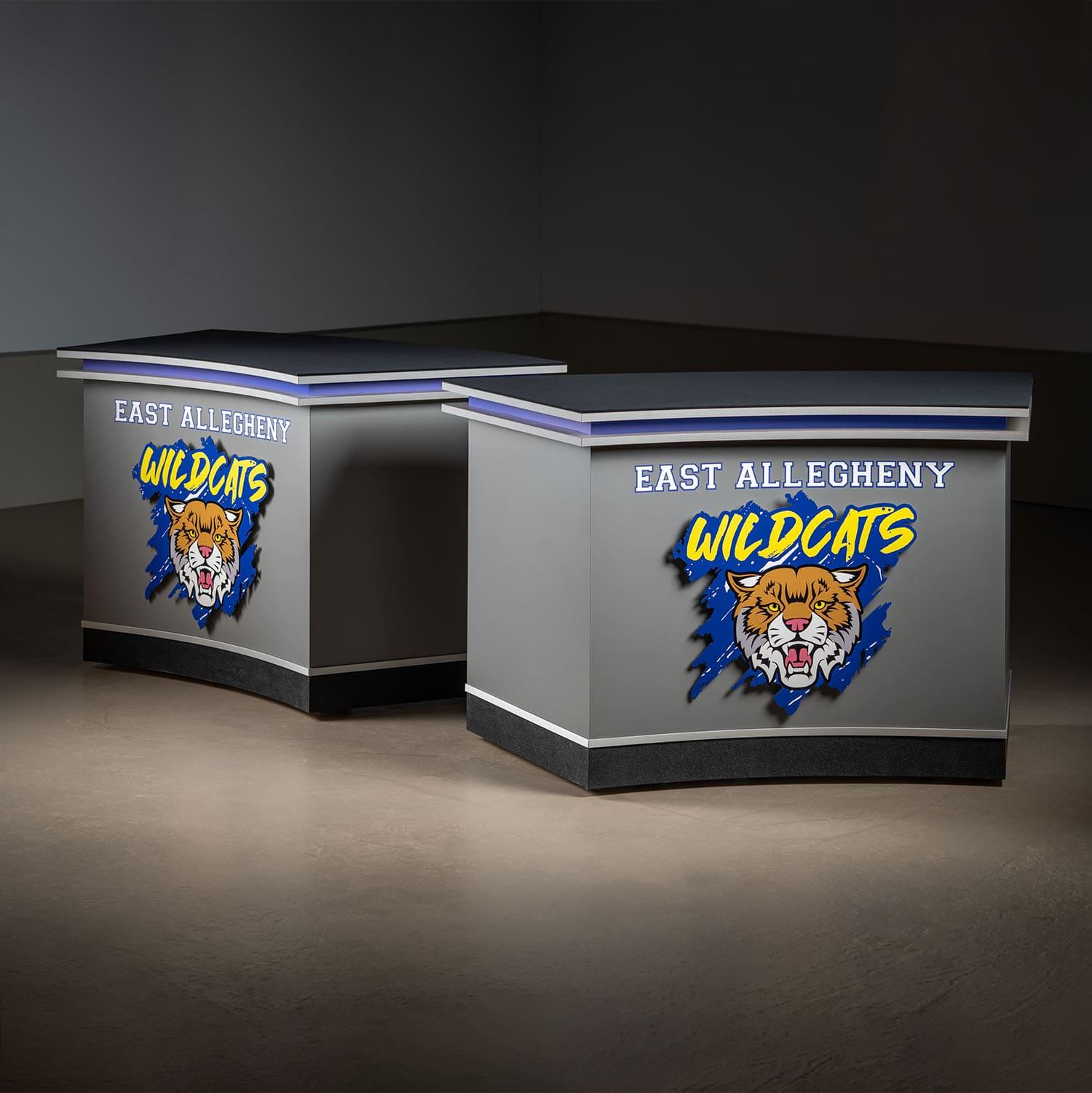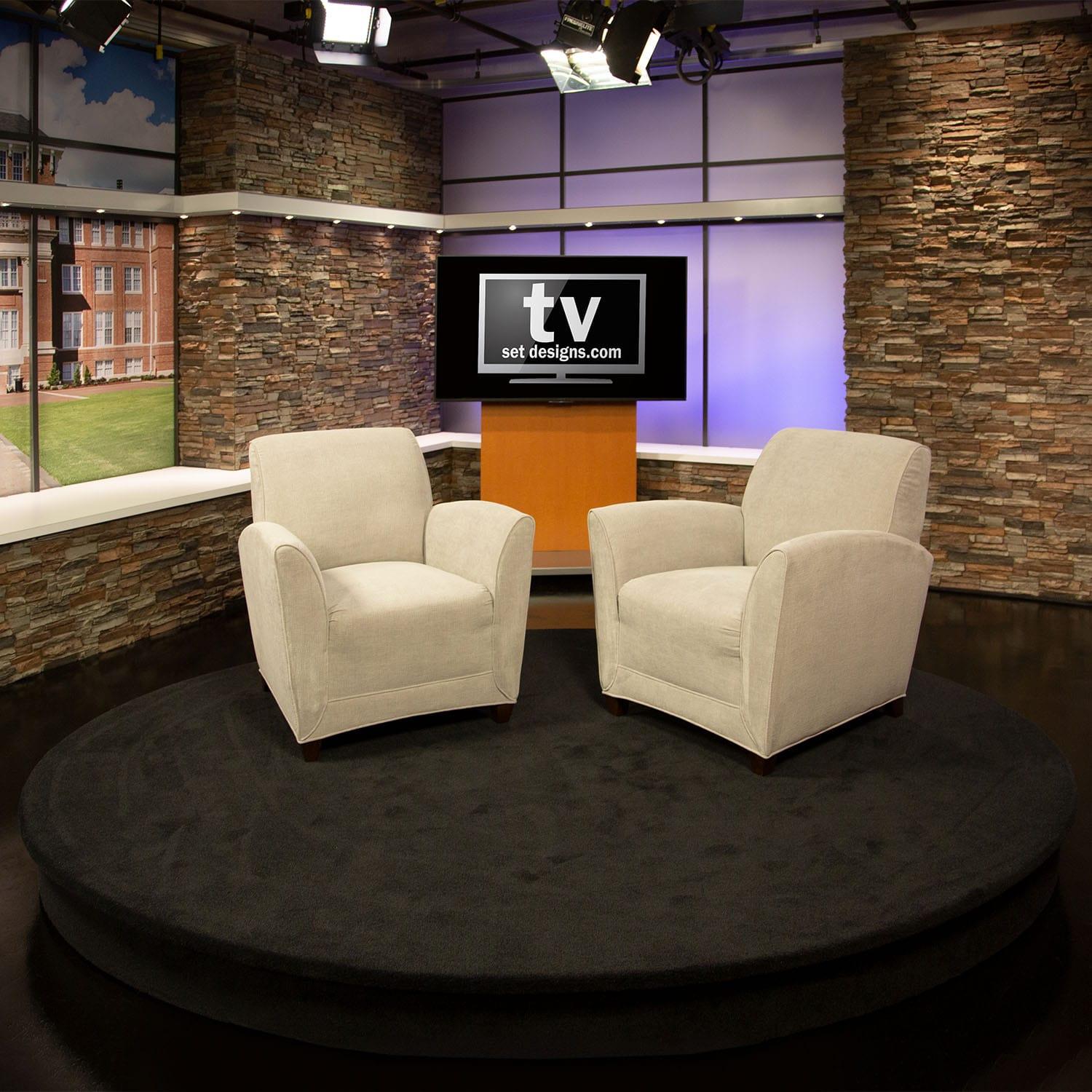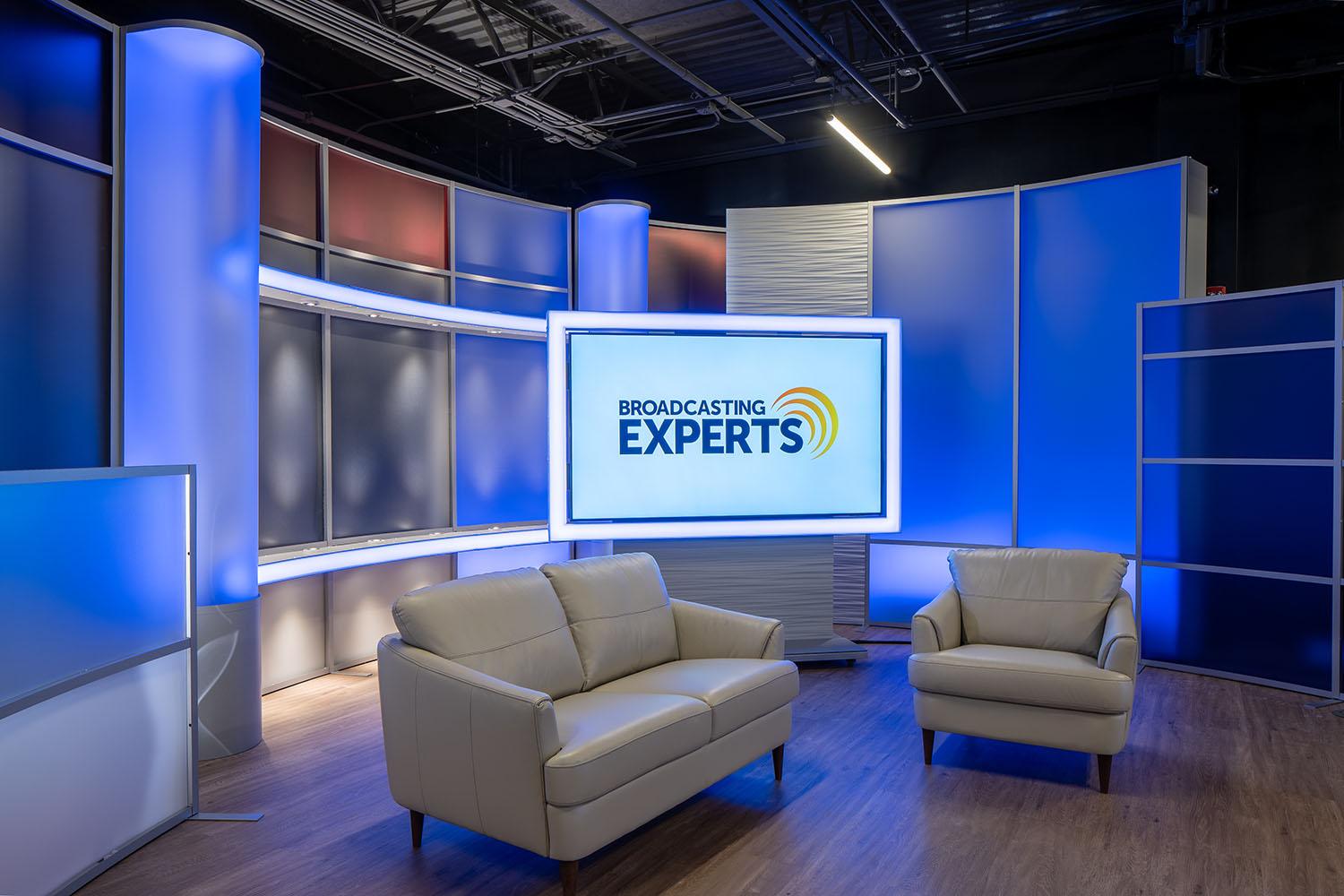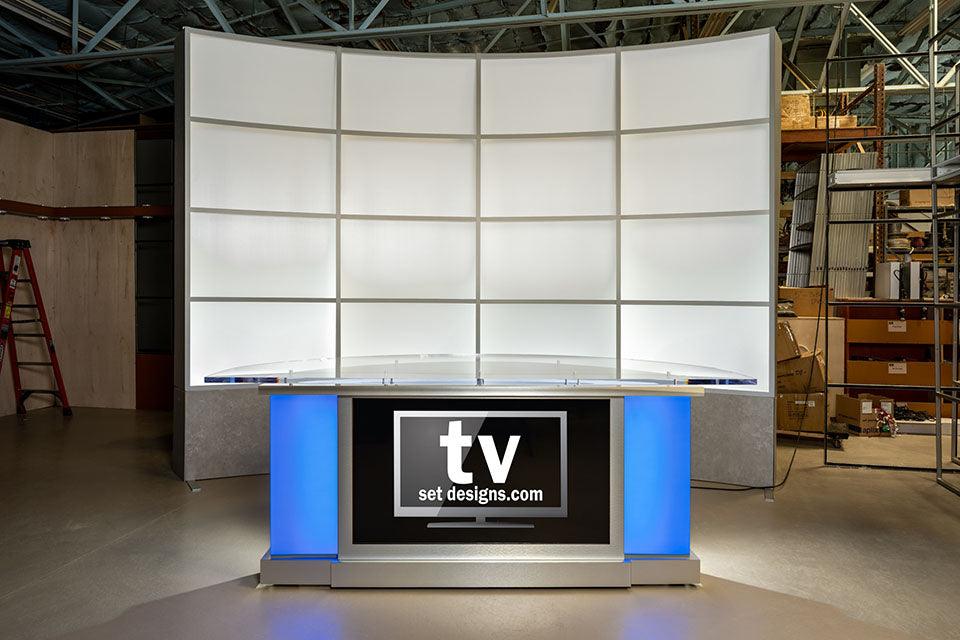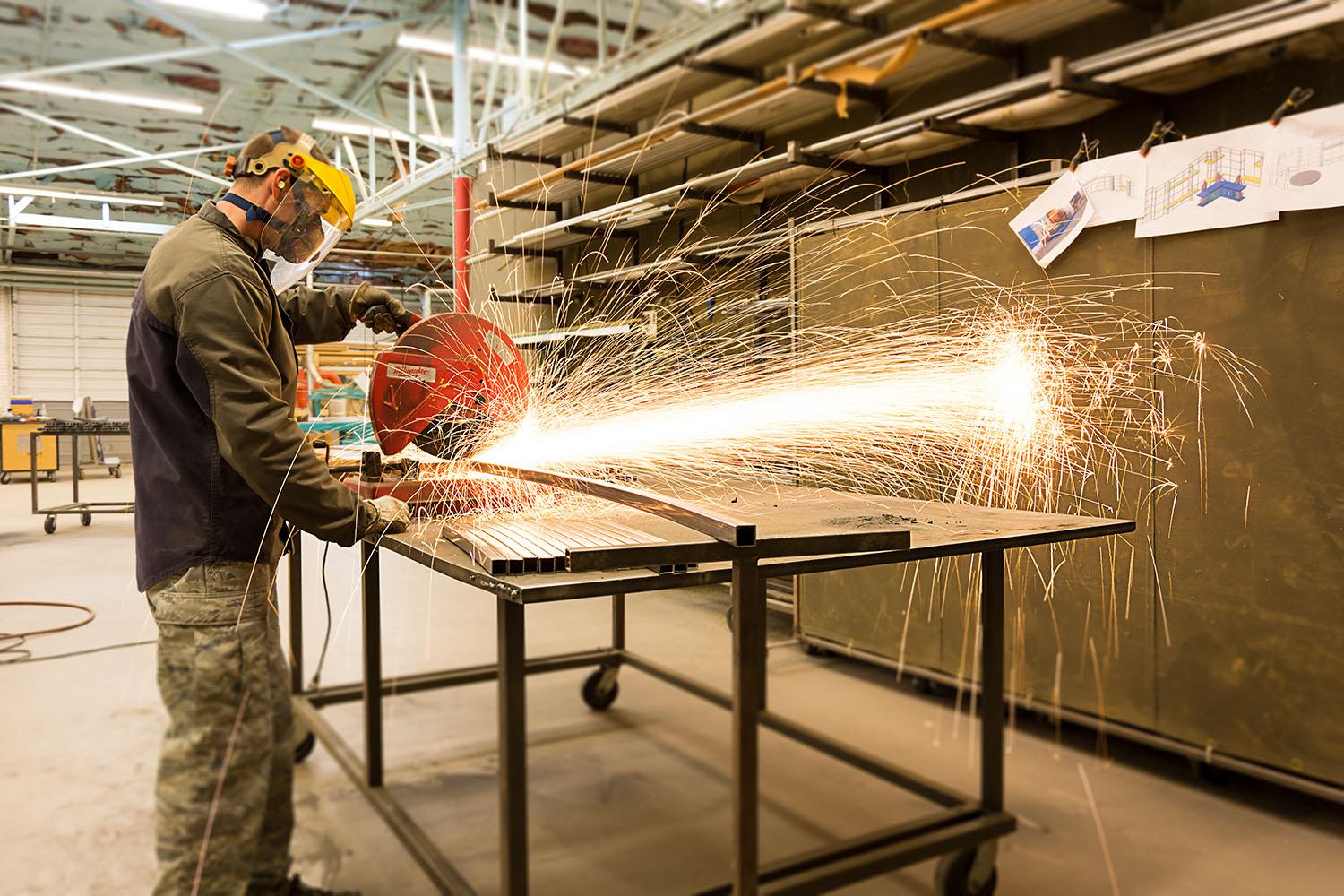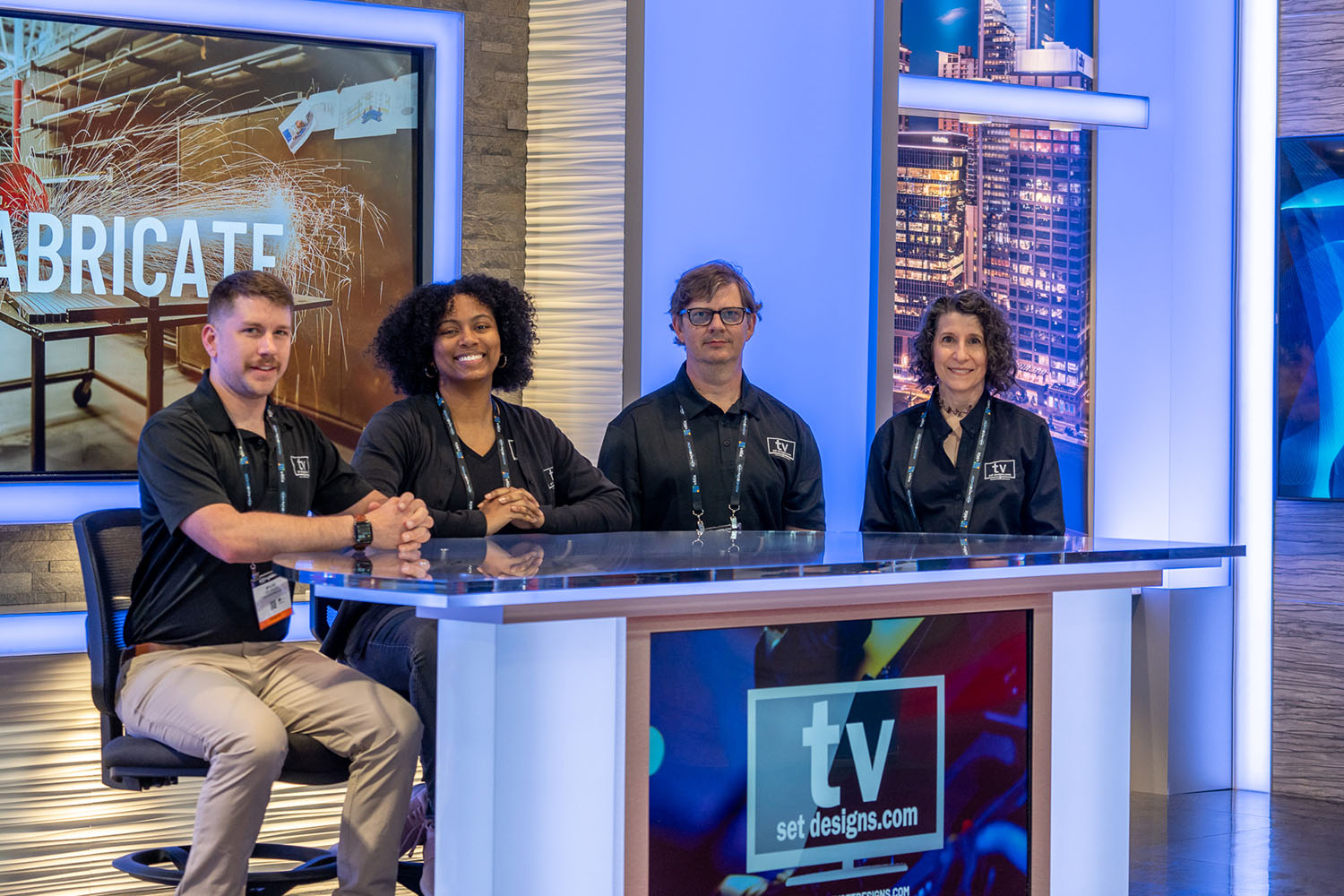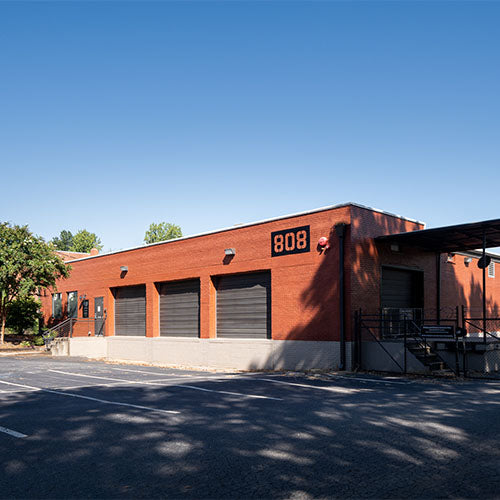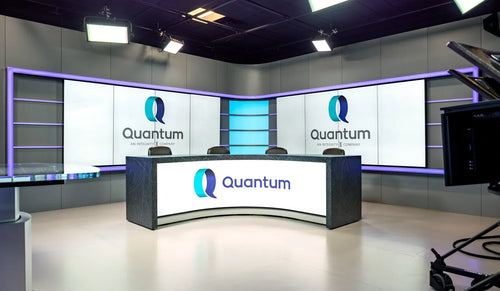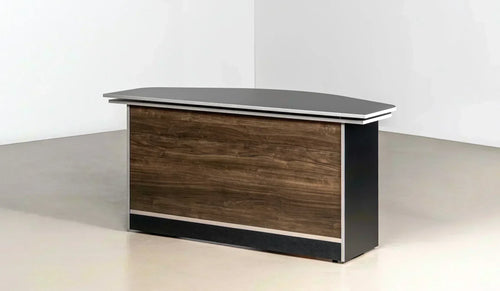Video walls have become popular for creating dynamic and engaging visual content. Whether for news studios, talk shows, or vodcasts, the right video wall enhances visual capabilities and provides added flexibility to your content. This guide provides a foundation for making informed decisions that align with your broadcast goals.
Video Wall Monitor Arrays vs. Seamless Video Walls
When choosing a video wall setup, it's important to understand the differences between video wall monitor arrays and direct-view seamless video walls.

Video wall monitor array integrated into set
Video Wall Monitor Arrays
Direct: You can purchase and have your video wall fabricated and installed by TVSetDesigns.com.
Composition: Composed of multiple individual monitors tiled together.
Bezel Impact: Each monitor has a bezel, which creates visible seams between screens. Modern arrays minimize bezel width, but some seams remain.
Cost-Effectiveness: Much more affordable than seamless options.
Flexibility: Easier to replace individual monitors if one fails, reducing downtime and maintenance costs.

Seamless videowall with flanking set pieces
Direct-View Seamless Video Walls
Indirect: We do not offer installation for seamless video walls. We will design our set to fit around your video wall provided by an integrator or distributor.
Composition: Made up of direct-view LED panels that fit together, creating a single continuous display.
Seamless Display: No visible seams between panels.
Higher Cost: More expensive than monitor arrays.
Installation and Maintenance: Requires careful installation and often more complex maintenance.
Understanding the Basics
A direct-view LED is a display of light-emitting diodes (LEDs) mounted on a panel. Each pixel is made up of individual diodes, and the arrangement of these diodes forms the display's pixel matrix on individual modular panels. Direct-view LED video walls consist of several panels working together to seamlessly display content like a single screen.
If you want a screen size of 110” or larger, you should start considering direct-view LED displays. Also, if you want to create a digital feature wall with an unconventional shape, size, or aspect ratio, direct-view LED displays are the only choice for accommodating those demands.
Key Standards for Pixel Pitch
Understanding pixel pitch is crucial when selecting a direct-view seamless video wall for broadcast and on-camera use. Pixel pitch is the measurement, in millimeters, between the center of each LED light pixel on a display module. The lower the number, the finer the pixel pitch. The finer the pitch, the more closely the display can be viewed.
The current broadcast standard is a 1.5mm pixel pitch–moving away from a 1.8mm pixel pitch–with a trend towards even finer pitches. The closer a video wall is to the camera, the tighter the pixel pitch needs to be. A 1.2mm pixel pitch is now the standard for desks, tight shots, and small studios.
Emerging Trends in Video Wall Design
Hybrid studios that combine real set pieces with advanced technology like camera tracking, set extensions, and augmented reality are becoming increasingly popular for broadcast. Although virtual sets continue to make great advancements, they still lack the same visual quality as physical sets. Combining the two in a hybrid allows for more versatile and dynamic content creation.

Custom news desk with Planar CLI Flex curved seamless video wall
Emerging trends in the displays themselves are the use of curved walls and non-standard aspect ratios. These are becoming more popular but come with additional challenges in the design and installation of the display and its ongoing use. Vertical content from social media apps, like TikTok and Instagram, also affects the choices for displays. Vertical displays are becoming more popular as a result, or at least displays that can accommodate vertical content.
Start Planning Early
Collaborating with integrators early in the design process is vital. They help manage the relationship between set designers, fabricators, and video wall providers, ensuring smooth integration. They also can help you with technical support and maintenance long into the future. Here is a non-comprehensive list of things an integrator can help you with when planning for your video wall:
Collaboration: Acts as a bridge between set designers, set fabricators, mount manufacturers, and video wall integrators to address all technical and design aspects comprehensively. This ensures a holistic approach to integration, minimizing potential issues.
Technical Integration: Beyond fitting the video wall into the set, it's essential to ensure compatibility with existing and future broadcasting equipment. This includes ensuring sufficient processing power and integrating control systems for operation.
User Training: Provide training for your team on how to use and maintain the video wall effectively. This includes operating the control systems, managing content, and performing basic troubleshooting.
Content: High-resolution screens require high-power processing and high-quality content for the best results. An integrator is able to advise on content management systems to easily control what is displayed on the video wall. This includes software that allows quick changes and updates to the displayed content, ensuring flexibility and responsiveness during broadcasts.
Power Supply: Ensure that the video wall's power supply is reliable and capable of handling the load.
Cameras: Advise on choosing the correct camera for your needs. Cameras with rolling shutters can cause scan lines in shots showing your display if not properly synced with the video wall.
Redundancy: Plan for redundancy in critical components to avoid downtime during broadcasts. This includes having spare parts and backup systems ready to replace any failed components quickly.
Designing for Video Walls
Effective video wall integration requires careful planning and collaboration. Our approach involves working closely with your team to ensure that our set design seamlessly accommodates your video wall. Here are the important factors to consider:
Communication: Clear communication with your team throughout the design process ensures that all technical requirements and aesthetic preferences are met. This collaborative approach helps in addressing any challenges that may arise during the integration process.
Precise Measurements: Obtaining the exact dimensions of your video wall is crucial to aligning it with our scenic elements and guaranteeing a flawless fit and integration.
Talent-Display Distance: The distance between the on-camera talent and the video wall is critical. This distance impacts the required pixel pitch of the video wall to ensure clear, high-quality visuals on-camera.
Lighting Considerations: Video walls are not just visual displays; they also act as light sources. This should be considered when designing the set and studio lighting.
Aesthetic Consistency: Ensure that the video wall complements the overall set design. The set's design and intended content should be cohesive, allowing the video wall to blend seamlessly with other set elements in terms of color, style, and branding.
Future-Proofing: Our Modular Set Frame System allows for potential future upgrades to your video wall. Our frames are able to adapt and be easily swapped out to support newer technologies and different screen sizes, allowing for easy updates without major redesigns.
Fabricating for Video Walls
Our Modular Set Frame System has many beneficial features for video wall integration, that more traditional wood sets and Hollywood flats do not have. Our Frames are freestanding without the need for a bulky jack or brace. Also, the Skins (the laminate faces of our frames) apply with velcro, which allows for easier access to the rear of the set without requiring a large set off from your studio walls. Here are other important factors to consider:
Design-Build: Our comprehensive in-house design-build process allows for a smooth transition between design and construction without the compromises and delays that come with having these services provided by two different companies.
Mounting Infrastructure: We have experience working with wall-mount and freestanding video walls. Our Modular Set Frames are custom fabricated to fit around your display. Our standard frames are not designed to act as structural support for your video wall.
Future-Proofing: Due to the nature of our Modular Set Frame system, our sets can easily accommodate future upgrades and replacement of a video wall.
Maintenance and Accessibility: Our set frames are freestanding with removable skins, which allow access to the rear and side of the display for maintenance.

Videowall monitor array with custom surround
Investing in the right video wall technology and understanding the intricacies of design and integration can significantly enhance your broadcast's production value. By assembling an experienced team, you can create captivating and reliable video wall setups.
Key Takeaways
Trends: Hybrid studios, curved walls, non-standard aspect ratios, and vertical displays are gaining popularity.
Pixel Pitch Standards: 1.5mm is the current broadcast standard; 1.2mm or below is recommended for desks and small studios.
Start Planning Early: Engage integrators early.
Design: Requires clear communication, precise measurements, consideration of talent-display distance and lighting, and consideration of on-camera asethetics.
Fabrication: Our Modular Set Frame System offers freestanding frames and velcro-applied Skins for easy access, future-proofing capabilities, and maintenance accessibility.
Founded as Gelbach Designs in 1997, TVSetDesigns.com provides a holistic in-house design-build experience. In addition to custom work, we offer an unrivaled catalog of ready-designed news desks and set components. Our industry-exclusive transparent pricing and turnkey solutions make us the top choice for clients of all sizes.
support@tvsetdesigns.com or (704)339-0785


